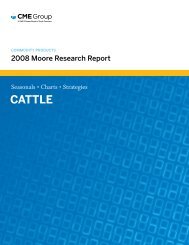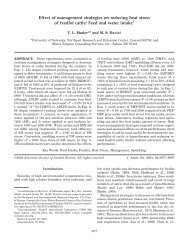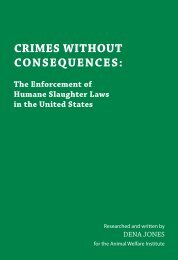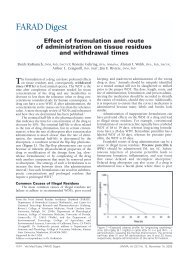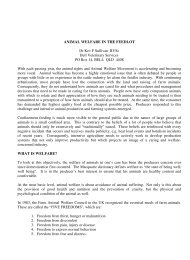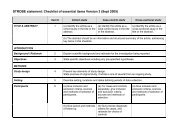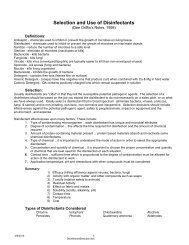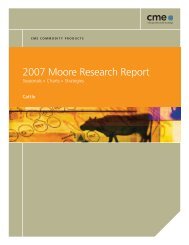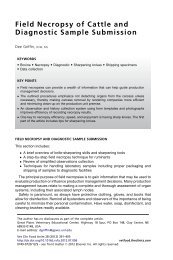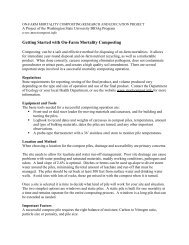Drylot Beef Cow/Calf Production AS-974 PDF
Drylot Beef Cow/Calf Production AS-974 PDF
Drylot Beef Cow/Calf Production AS-974 PDF
You also want an ePaper? Increase the reach of your titles
YUMPU automatically turns print PDFs into web optimized ePapers that Google loves.
8<br />
equivalent prices. Creep feed consumption increases<br />
to approximately 8 to 10 pounds per head per day at<br />
160 days of age. Creep pastures are recommended<br />
if grassed areas are available adjacent to the<br />
drylot. Using creep pastures reduces creep feed<br />
consumption, provides an improved environment<br />
and increases weaning weights in research at NDSU-<br />
Carrington.<br />
Early Weaning<br />
Early weaning is easier with drylot cows and can<br />
reduce cow feed costs while maintaining calf growth.<br />
Creep feeding is highly recommended prior to early<br />
weaning calves. Weaning drylot calves amounts to<br />
removing cows from the pen, with calves remaining<br />
in familiar facilities with water and creep feed<br />
available. Highly palatable, nutrient-dense mixed<br />
diets containing grains, coproducts, excellentquality<br />
forages and supplements, such as yeast, are<br />
recommended. Either fence line separation of the<br />
cows or total removal from the area can be practiced.<br />
After weaning anxiety is passed, cows can be turned<br />
out on small-grain stubble, nonfarmable lowlands<br />
and later corn residue. Early weaning allows cows to<br />
regain condition before winter, plus provides a longer<br />
time to graze crop aftermath.<br />
Herd Health<br />
Health problems experienced in the drylot are<br />
generally the same as those occurring in pasture/<br />
range operations. However, in a poorly designed<br />
and poorly managed operation, the drylot can<br />
be a hot, crowded, dusty or muddy, fl y-infested<br />
environment. A well-drained or paved site with a<br />
southern exposure and periodic manure removal<br />
reduces environmental stress. The high density of<br />
animals is conducive to spreading infections, so<br />
prompt, thorough treatment with appropriate followup<br />
is in order. Normal vaccinations and deworming<br />
are recommended. Consult your local veterinarian<br />
for specifi c recommendations. Foot rot can be a<br />
problem once established on the site, so prompt<br />
treatment is appropriate. Other problems that may be<br />
associated with drylot cows and calves are hairballs<br />
in calves and compaction in cows. These are very




